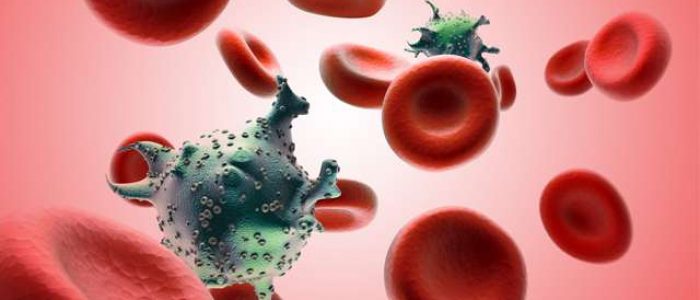Do you suspect that you have been infected with AIDS and want to get rid of doubts as soon as possible? What is the probability % that what happens to you is really AIDS? Is there anything that can be used to confirm or rule out that a man or a woman has AIDS?
AIDS is one of the most devastating diseases of the 21st century.
Also known as acquired immunodeficiency syndrome, it is a virus that directly affects the person by destroying the cells of the immune system.
The immune system protects us against threats from external agents, so it cannot fight infections and diseases that damage the body.
This disease is very difficult to detect because it has no symptoms, so the only sure way to determine whether or not you have AIDS is through a blood test.
HIV tests do not detect the existence of the virus but instead check for the presence of antibodies that work against it.
White blood cells are responsible for fighting infections, so if you have a large number of these types of cells in your blood, it means you have the HIV virus.
4 AIDS myths you should know
Finding out if you have been infected by this virus can become a priority if you think you may have been exposed to it. Before getting to know how AIDS affects our bodies, it is important that you know a few more things.
1. AIDS can be cured
In reality, this virus has no cure, but there is an effective treatment that can control the disease, making it possible to lead a normal life.
2. HIV is spread by sweat and saliva
It is false that contagion occurs through these fluids, since HIV is not found in them.
3. Mosquitoes can transmit the virus through bites
The truth is that these insects digest viruses by absorbing them and the amount they extract is minimal to infect the blood.
4. Hugs and kisses can spread
It is not spread by casual contact such as shaking hands, hugging, kissing, showering, or sharing food.
What are the differences between HIV and AIDS?
It is common to hear or read HIV and AIDS as if they mean the same thing, but they do not.
Both are acronyms that due to their similarity, it is natural to use them interchangeably, but there are nuances that make them different and that it is important to know.
HIV is the acronym for HIV.
- Virus: I know It is a type of microbe. In Nature we find many types of microbes, such as bacteria, parasites, fungi ...
- Immunodeficiency:
Immune = Defense system
Deficiency = Weakness
That is, a weakening of the immune system. - Human: The word Human is specified because some viruses are active in animals.
AIDS is the acronym by which advanced HIV infection is known and stands for Acquired Immune Deficiency Syndrome.
- Syndrome: set of symptoms.
- Immune: refers to the immune system.
- Deficiency: Weakening.
- Acquired: that it is not a hereditary health problem.
In other words, we call AIDS an advanced stage of HIV infection and that person begins to develop the signs of the infection.
A person who has AIDS also has HIV because it is HIV that causes AIDS.
However, someone who has HIV does not have to have AIDS, since they have not yet reached that stage of infection.
We can talk about HIV-positive people or people who have HIV, since both people have HIV regardless of the state of their infection.
What are the symptoms of AIDS in humans?
The symptoms of this virus are very similar to those of the flu, mononucleosis or tonsillitis, so it is very difficult to identify with precision.
Some of the symptoms that occur in the initial phase
- Headache
- Fever
- Permanent fatigue and tiredness
- Throat pain
- Skin rash or rash
- Swelling of the lymph nodes
Other symptoms that appear later and are the ones that can finally detect AIDS
- Diarrhea for more than 5 days
- Elevated fevers of 38º onwards.
- Dry cough
- Great weight loss
- Swollen lymph glands in the neck, groin, or armpits
- Pneumonia or respiratory diseases.
- Exhausted
- Memory loss and mental confusion.
- Pelvic infections that do not clear up.
- Oral or vaginal infections.
- Skin rash.
- Night sweats and chills.
- Colic, nausea, and vomiting.
- Blisters on the tongue and mouth
- Vision problems
It is not possible to know if you are infected by the virus just by presenting one or more of these symptoms, since some of those affected may not present any type of symptoms for many years.
How does HIV work in the body?
HIV is a common virus like any other that tries to infect healthy cells by inserting its genetic code into them to form new viral cells from the healthy cell it attacks.
Once it is installed, it causes the healthy cell to create more viruses that end up killing it and spreading through the body. The main problem with HIV is that it attacks the main cells that are responsible for protecting us against diseases.
What are opportunistic infections?
The so-called opportunistic infections are those that, thanks to the weakening of the immune cells, affect our body and are not fought normally.
In most cases, complications with AIDS do not arise from the virus itself, but from complications that develop when the immune system is weakened, since under normal conditions there would be no problem.
Ultimately, what causes the death of the HIV patient is another disease that attacks the body that cannot defend itself because it is damaged.
How is the HIV virus transmitted?
When there is a person infected with AIDS, they can transmit it through body fluids such as blood, semen, vaginal secretions, breast milk and pre-ejaculatory fluid (pre-ejaculatory fluid). Therefore there are different forms and performances of transmission.
It can be transmitted well through sexual intercourse of any kind (oral, anal or vaginal) without using means of protection such as a condom; by the contact of the blood with other contaminated blood (by means of needles, syringes or other objects).
In addition, in the case of pregnant women, it can be transmitted from the mother to the child or also in childbirth and during the breastfeeding period.
What is the treatment and cure of the virus?
There is no cure for AIDS, but there is a good treatment that slows the evolution of the infection until it almost stops.
Treatment consists of antiretroviral drugs (ART) to treat this infection. People who receive this type of treatment take several drugs combined to fight HIV every day. These do not eliminate the condition, but they help people lead healthier and longer lives. Antiretrovirals also reduce the risk of infection.
These drugs prevent the virus from reproducing by reducing the level of HIV in the body, which makes the immune system more resilient. This allows the body to defend itself against infections and external agents by fighting them.
Treatment should begin at the time the virus is diagnosed as early as possible since it is vital to stop the expansion of HIV cells and the sooner it is stopped, the fewer complications usually occur.
In addition to medications, psychological assistance, counseling and psychosocial support are more frequently required. Lead a healthy life with healthy lifestyle habits such as a balanced diet, basic hygiene and daily exercise.
The 10 practical methods to effectively prevent the AIDS virus
Although there is no cure, there are certain behaviors that will allow us to enjoy a full life without engaging in risky behaviors.
To do this, by putting into practice any of the following precautions you will be able to considerably reduce the chances of being infected by this virus.
Use condoms during sex of any kind
Checking the condition of the condom, placing it correctly to avoid deterioration or damage and throwing it away after use, taking into account that it is for single use.
Avoid practicing unprotected oral sex
Contact with the fluids (semen, blood or vaginal secretions) of infected people pose an imminent risk.
Consider sexual abstinence
It is a purely personal decision that consists of not practicing intimate relationships and that completely prevents this virus through sexual means.
Limit the use of pairs
In this way, the probability of contagion is reduced.
Do not share needles or syringes with or from other people
Through the blood it is transmitted very quickly and efficiently.
Uses sterilized and disposable instrument
Especially for skin piercing (piercings, tattoos, injections, etc.).
Prevent the spread of the virus through healthy behaviors
In the case of pregnant women, they should receive treatment if they were carriers of the virus to reduce the risk of contagion to the baby. In addition, it is advisable that the delivery be by cesarean section and the child cannot be breastfed, since breast milk is a way of spreading the infection.
Trust the safety of blood transfusions
Health professionals must test the blood beforehand to rule out any type of condition.
In medical interventions with patients of this type
Health workers must exercise extreme precautions by:
- Use of gloves
- Use of glasses or eye protectors
- Dispose of needles or syringes once used
- Clean any surface stained with blood with water and bleach
- Always sterilize medical equipment
Follow the recommendations of prevention campaigns.
They are aimed at all types of population (young people, adults and the elderly).



